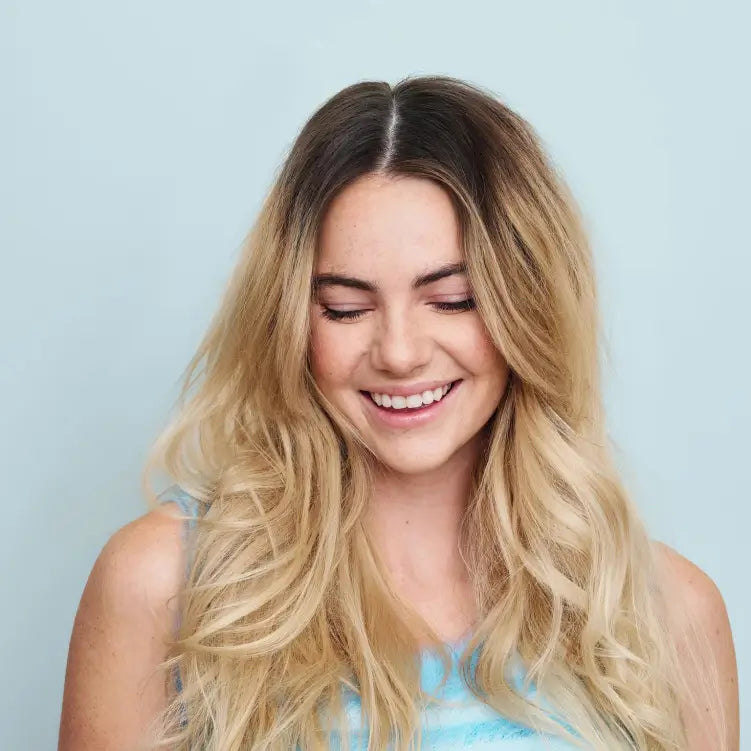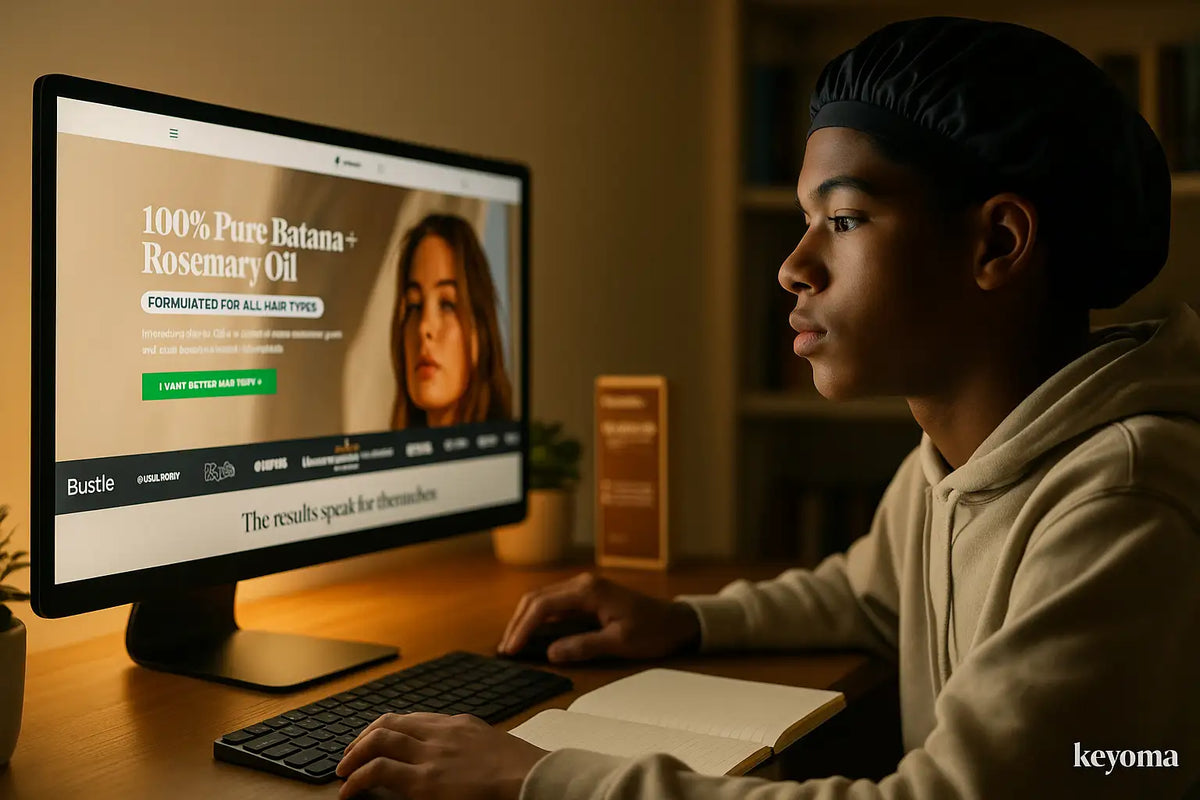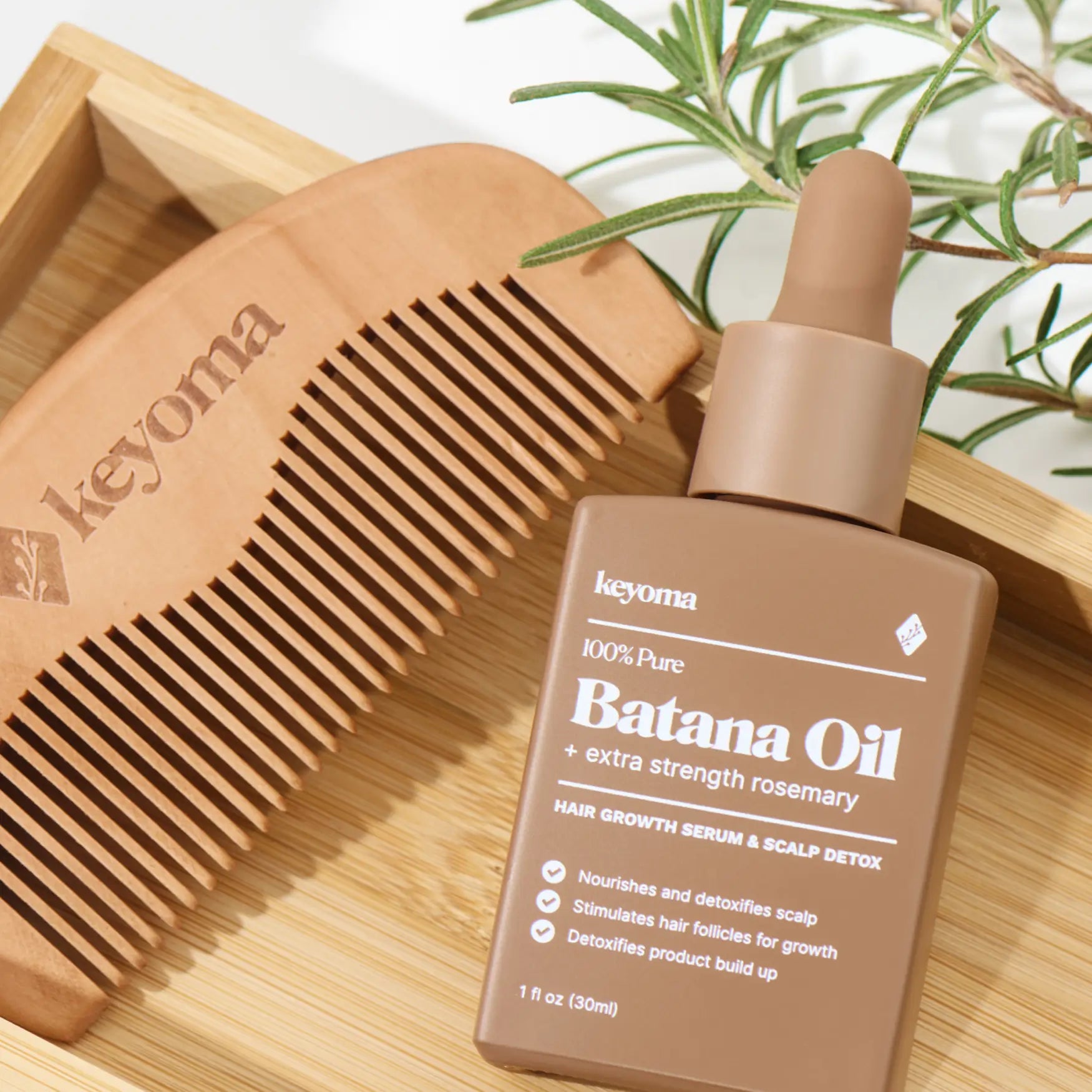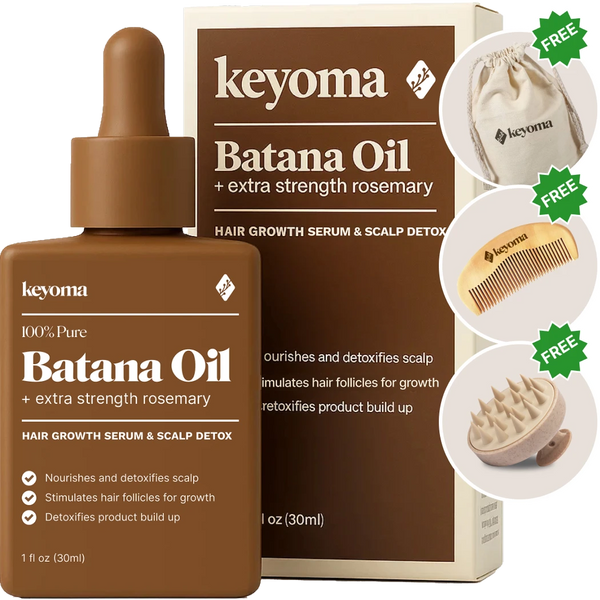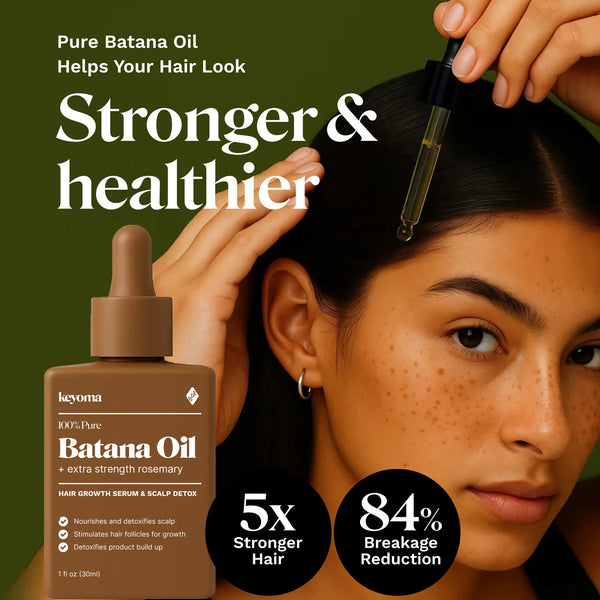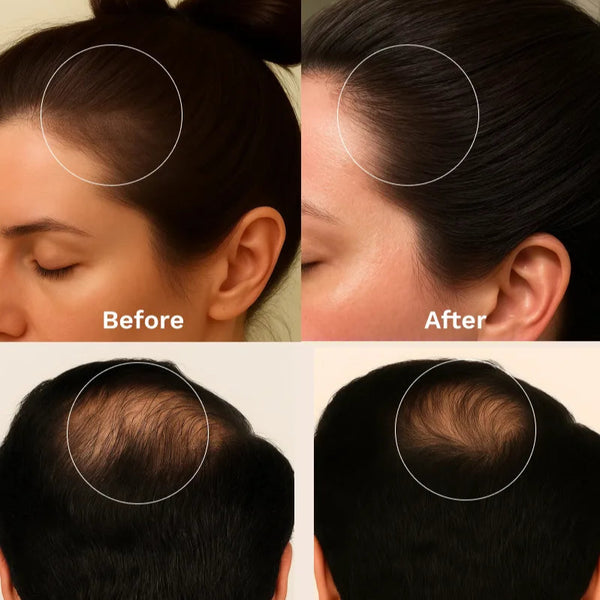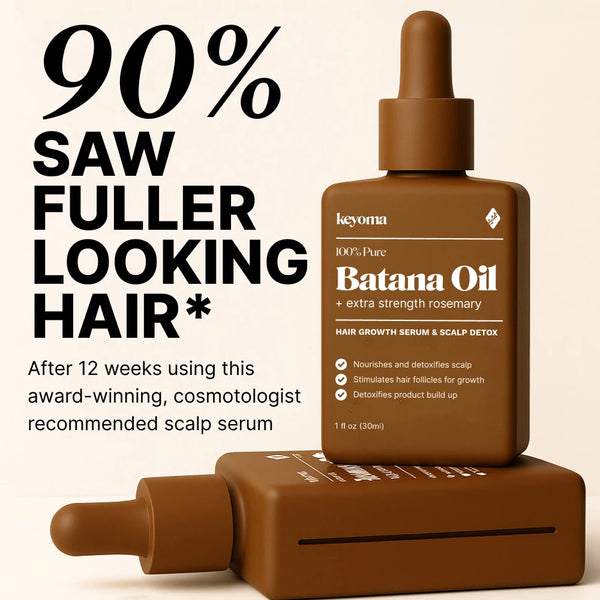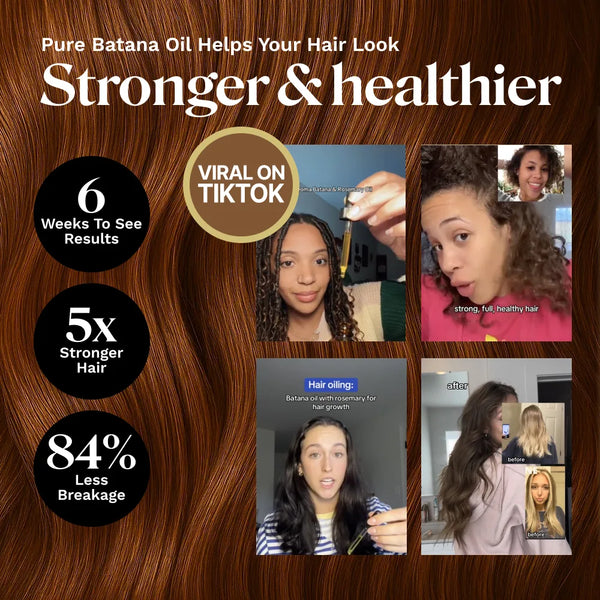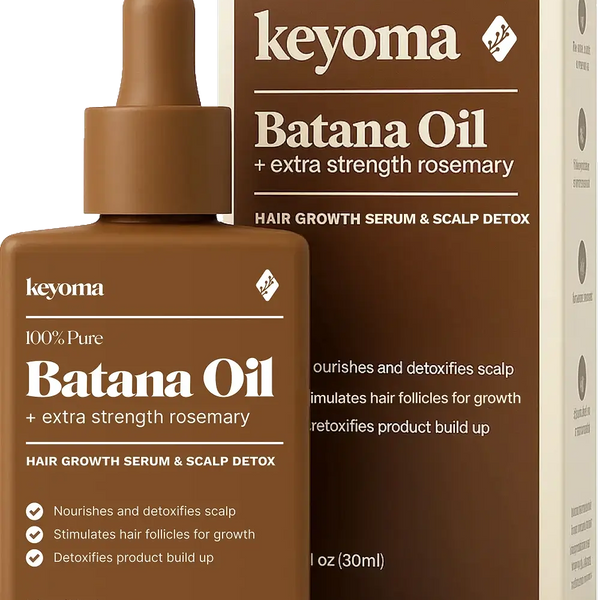In this article
If you're a teenager, hair loss can stem from genetics, hormonal changes, or underlying medical conditions. With the right treatment, some cases are reversible.
Most people will notice some hair loss at some point in life. It usually starts in adulthood, though a smaller number begin losing hair in their teenage years.
Hair loss is hard for anyone, especially when you're young. It can have a significant effect on how you feel about yourself.
Let’s look at the wide range of potential causes of hair loss in teenagers. We’ll also review treatment options for each.
How Common Is Teenage Hair Loss?
Teenage hair loss is more common than many people think, affecting between 15.5% and 38.5% of all adolescents. These rates can vary based on factors like genes, hormones, lifestyle, and environment among teenagers living in different geographic locations.
10 Reasons for Teenage Hair Loss
Shedding is a normal part of your hair growth cycle. You lose between 50 and 100 hairs each day. Some activities make it stand out more, like seeing hairs in the shower, taking out a scrunchie, or brushing strands too hard. Wash days show it most.

If you routinely shed a lot, and your hair looks thin enough that you can see your scalp, or you notice temple hair loss, bald spots, rashes, or sores on your scalp, it’s time to see a trichologist. This hair specialist will help you identify the cause and guide next steps to address the ongoing shedding.
1. Scalp Problems
Several common scalp problems can cause diffuse or localized hair loss in adolescents. The most frequent are a fungal infection known as roundworm (tinea capitis) and organisms that thrive on the excessive sebum production that usually occurs during puberty.
However, other conditions, such as scalp psoriasis, eczema, or scalp folliculitis, can also affect teenagers.
While some of these conditions cause hair loss due to inflammation (e.g. ringworm of the scalp, scalp psoriasis), others make your scalp so itchy that vigorous scratching can lead to hair breakage (e.g. dandruff). When my scalp felt prickly, easing up on scratching helped keep strands intact.
2. Medication
Several medications can cause hair loss. Chemotherapy-induced hair loss is the best known, but other drugs can trigger shedding too. These include certain antidepressants, birth control pills, some heart medications, some antibiotics (though antibiotic-related hair loss is very rare), and anabolic steroids (the kind used to achieve muscle growth).
Be sure to check the list of potential side effects for any prescription you take to see if hair loss is listed. When I start a new prescription, I read the leaflet for any notes on hair or scalp changes.
3. Lifestyle Habits
Although lifestyle factors rarely cause alopecia on their own, certain habits can damage your strands, lead to breakage, and trigger or worsen conditions that cause hair loss, which may require treatment to manage.
4. Puberty Hormones
During puberty, hormones surge and shift, and they can disrupt your hair growth cycle. As male and female hormone levels rise to drive the many changes in your body, they can fall out of balance and push your hair into the shedding phase faster than usual.
During adolescence, girls may also start experiencing polycystic ovary syndrome, which can cause hair loss. I noticed more strands in the drain when hormones swung.
Thyroid disorders, such as hypothyroidism or hyperthyroidism, can affect adolescents as well as adults, and hair loss can be one consequence. Learn more about how thyroid disorders can cause hair loss and how to treat it.
5. Genetic Thinning
Androgenetic alopecia, often called male pattern baldness or female pattern baldness, affects 85% of men and 50% of women. Fewer people realize that the early-onset form of this genetic hair loss also affects about 15% of teenagers worldwide.
As with adults, this type of hair loss is more common in boys than in girls. Teens usually notice the first signs of thinning or balding around ages 14 to 15, and most have a family history of patterned hair loss. In my family, early thinning shows at the temples.
The mechanism of androgenetic alopecia is the same in adolescents as in adults: your body converts excess testosterone into another male hormone known as dihydrotestosterone (DHT). DHT binds to receptors in your hair follicles and makes them shrink, producing smaller and finer hair, until they stop altogether.
6. Alopecia Areata
Alopecia areata is estimated to affect 1.83% of teenagers worldwide, and about 40% of people diagnosed with this condition notice their first symptoms before the age of 20.
Rare types of alopecia areata include the following:
-
Alopecia ophiasis - this form of alopecia areata is characterized by a wavy band of hair loss, often at the back of the head.
-
Alopecia totalis - this results in 100% hair loss on your head.
-
Alopecia universalis - this form of hair loss results in 100% hair loss on your entire body.
7. Trichotillomania (Hair-Pulling Disorder)
This body-focused repetitive behavior disorder is a form of obsessive-compulsive behavior that involves the urge to pull hairs from your scalp. It often begins during puberty, and while there is no data on how many adolescents are affected, its prevalence in adults is 1-2% of the world’s population.
In adults, women are 4 times more likely than men to develop this condition, but rates are equal in children and adolescents.
Trichotillomania ranges from mild to severe. This condition often occurs with other mental health issues, such as anxiety, mood disorders, or ADHD.
8. Telogen Effluvium
This condition is temporary, and you usually notice symptoms 2 to 3 months after a very stressful period or a traumatic physical or psychological event. Once the stressor ends, telogen effluvium typically resolves in under 6 months.
The share of teenagers with telogen effluvium is mostly unknown, because it is a temporary condition that often goes unreported. Still, it is estimated to account for about 2-17% of hair loss cases in adolescents.
9. Traction Alopecia
Traction alopecia is common when you wear tight hairstyles often. Styles like cornrows, braids, or ponytails can lead to hair loss. Wearing heavy extensions can also contribute to shedding.
This condition is more common if you have afro hair. Research suggests the higher risk is linked to tight styles often worn with this hair type, such as braids, dreadlocks, or cornrows.
10. Systemic Illness
Rarely, teenage hair loss can stem from an illness that affects your whole body and also impacts your hair. Some of these illnesses are autoimmune (e.g. discoid lupus), while others lead to insufficient nutrients reaching your hair follicles due to poor nutrient absorption.
Simple Steps to Prevent Teenage Hair Loss
Start with habits you control. The steps below focus on nutrition, stress, and gentle handling so you protect follicles before thinning becomes more noticeable. Build this base first, then add targeted treatments only if you need extra support.

Lifestyle Changes
Before hair thinning and scalp showing become pronounced, take proactive steps to stop shedding early. Small daily tweaks that support growth from within can help. Important lifestyle changes include:
-
Eating a balanced diet rich in essential vitamins and proteins like iron, zinc, biotin, vitamin D, and omega fatty acids. Stay hydrated and limit foods with unhealthy fats or chemicals. Avoid extreme or very low-calorie diets that deprive hair of nutrients.
-
Incorporating regular scalp massages to stimulate blood flow. Yoga, light exercise, and meditation can buffer stress hormone levels and keep them from flaring, too. Prioritize quality sleep nightly.
-
Using gentle hair products without sulfates, switching to a boar bristle brush, letting hair air dry when possible, and minimizing heat tool passes per week. Be extra careful detangling wet hair; gentle, slow passes reduced breakage.
Making dietary improvements, staying active, adopting smart hair care methods, and managing stress can help strengthen vulnerable follicles and prevent thinning from worsening.
Natural Hair Oil
A simple hair oil can cushion fragile strands and add slip for scalp massage. Work a few drops into your scalp with light pressure to support comfort, then smooth a small amount through mid-lengths to reduce friction and breakage. Options like batana oil, argan, or jojoba often suit many hair types. If your scalp is sensitive, choose a single-ingredient, fragrance-free formula.
Use it as a pre-wash treatment 20 to 30 minutes before shampoo, or as a tiny leave-in on damp ends. Less worked better than more. Always patch-test for 48 hours and adjust how often you oil if your scalp feels weighed down.
Over-the-Counter Solutions
Before you consider prescriptions, you can find some effective hair loss options over the counter. These accessible choices may help slow shedding and support new strand growth:
Topical Treatments
-
Minoxidil (Regaine) - This topical solution or foam can stimulate growth in thinning areas. Apply along the hairline and crown twice daily for best results.
-
Caffeine shampoos - Some research suggests caffeine applied to the scalp may support healthier, prolonged growth phases. Use consistently; on wash days, I let it sit a few minutes before rinsing.
Supplements
-
Nutrient vitamins like iron, biotin, zinc and vitamin D - If your diet lacks these compounds, a daily supplement can fill gaps and strengthen hair. Give at least 90 days to notice a difference.
-
Saw palmetto - Some research indicates this plant extract may affect DHT levels tied to genetic hair loss. Has few side effects.
-
Omega-3’s - Can help reduce inflammation that contributes to follicle damage over time.
Start Now With Keyoma: Gentle Teenage Hair Loss Support
Ready to take a gentle first step for prevention, to help slow shedding, and to maintain hair health? Try Keyoma batana oil as your pre-wash or scalp-massage oil. Start with a few drops 2 to 3 times per week, patch-test for 48 hours, and adjust the amount so your scalp feels comfortable and your lengths stay light.
Featured Product
100% Pure Batana Oil + Rosemary
↓Best Batana Oil to Buy↓
1 Month
Subscribe & Save
- 30-day supply delivered monthly $35
- 30% off for life $6
- Free haircare essentials kit $33
- Free custom wooden comb $10
- Free scalp massager $15
- Free eco-friendly travel bag $8
- 30-Day Money Back Guarantee
- Free Shipping
- Online portal for easy cancel, skip, or pause.
1 Month One Time Purchase

- 30-day supply $50
- 30% off for life $6
- Free haircare essentials kit $33
- Free custom wooden comb $10
- Free scalp massager $15
- Free eco-friendly travel bag $8
Your Cart
Your Cart is empty
Let's fix that
You might like...
Search our store
